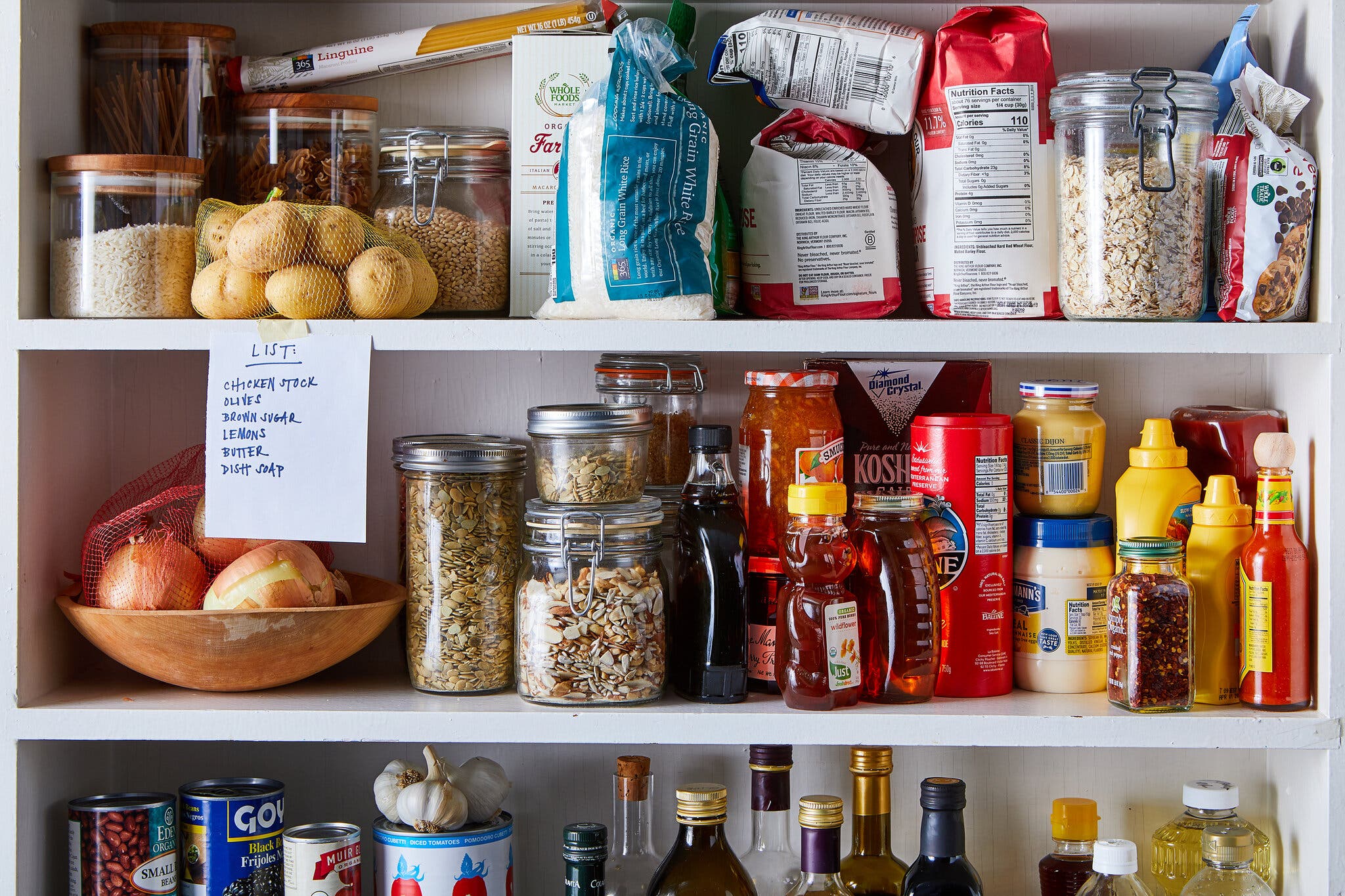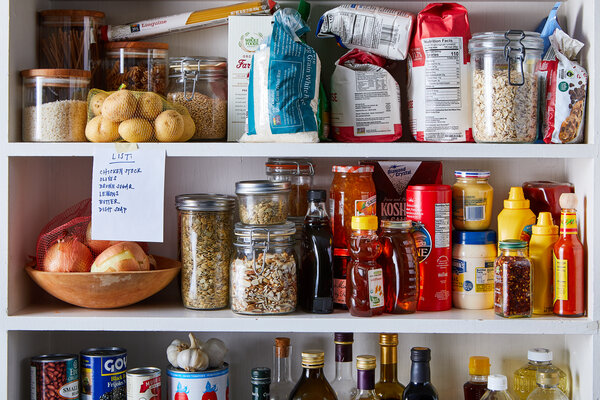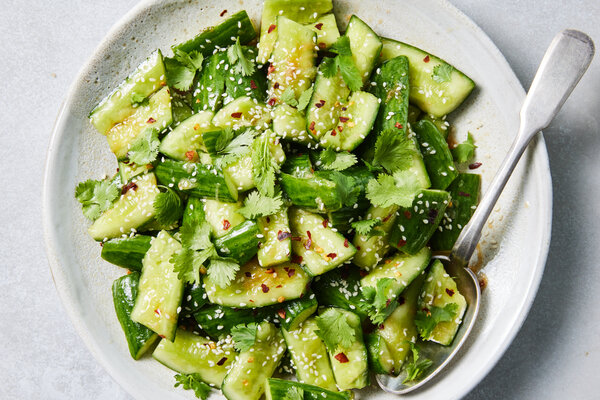Make the most of your space and your ingredients.

Julia Gartland for The New York Times. Prop Stylist: Kristine Trevino.
“Pantry” is an antique word with an eternal logic: Cooking is simpler and faster when you already have the ingredients. Here are some tips for keeping your cupboard, fridge and freezer in top order.
Clear the decks. Take everything out of your pantry, give it a hard look and decide what you can get rid of. Be ruthless. If you haven’t used it in a year, get rid of it.
Keep what looks and smells good. “Expiration,” “sell by,” and “best by” dates are not good guidelines. Some are determined by regulators, others by manufacturers, and almost all are arbitrary. Properly stored, some (unopened) ingredients, like canned fish, can last for years; others, like dried herbs, start declining in quality the moment they are sealed in a container.
Assess what remains. Then organize it according to the logic that makes sense to you: There’s no single best system. Your nut butters might be with the condiments, or the breakfast items, or the baking supplies.
Once you have your ingredients, remember that cooking will always create change and disorder. Cans of tomatoes may never match, spices may never live in matching containers, and your hot sauce collection may always try to take over the condiment shelf. But here are a few final thoughts on how to keep your pantry well stocked and well organized enough to be truly useful.
Different cooks need different systems. Some people store the jam with the dried fruits and maple syrup; others associate it with peanut butter, mustard and mayonnaise. The best logic is your own, and it may take some time to figure that out.
If you can’t see it, you’re probably not going to use it. A storage space with more shelving is the most efficient configuration for ingredients. Drawers or slide-out shelves also help tremendously with visibility.
Store everything you can in clear containers. Airtight plastic ones are best, and available in many shapes, sizes, and systems. Rectangular shapes make the best use of space.
Keep a roll of painter’s tape and some permanent markers in a kitchen drawer. It’ll help you make quick labels.
Be realistic about your habits. It’s great to clean and trim a week’s worth of vegetables at once — but if you’re not going to do that, buy smaller quantities.
Buy ground spices in the smallest quantities you can find (except for spices you use regularly). Specialty companies will ship as little as an ounce, about 3 tablespoons. You’ll save space and produce better, brighter flavors in your food.
Buy fresh herbs. Dried herbs used to be a pantry essential, but most start out with very little flavor and lose it quickly in storage. (A couple of exceptions are dried oregano and dried thyme.) Pick up fresh herbs when you need them for a particular recipe; it’s a better investment of money and storage space.
Buy heavy, shelf-stable ingredients like boxed broth and canned tomatoes in bulk; better yet, order them online to save time and irritation. Almost any delivery service or website will offer a better price on these items than a brick-and-mortar store.
Cooked ingredients are much easier to use up than raw ones. Whether you steam, boil, pan-fry or roast, cook anything in your refrigerator that looks tired. You can always use it in a salad, a grain bowl or a pasta.









